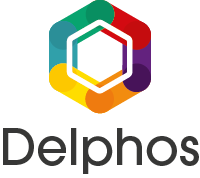It’s handy for new users on the Delphos platform to understand a few key concepts. It will help you to get the most out of the experience. So here is a small glossary of terms that you may hear.
Backend – This is the engine of the Delphos platform. It processes your data, builds your documents and handles email. It also integrates with other platforms like Google, Office 356, Azure, Amazon etc.
Connections – Connections are the integrations with third-party storage or software systems. They are either inbound (Pull) or outbound (Push). We have built-in connectors that send emails and texts. We can send files for storage on Dropbox, Google, Box, or Onedrive. We can also read data from spreadsheets, Sharepoint lists or SQL databases.
Data Sources– Data sources are tables of data that are available for use or recall in the mobile client. Things like customer details, price lists, a stock list, or employee data. There are three ways to update these tables;
- Rows of the table can be added, edited or deleted using a screen running on the mobile client.
- Or it can be a mirror of an Excel spreadsheet, Googlesheet, or Sharepoint list.
- Lastly, they can be a synced view of a table of data in a SQL database.
So, in our example, data sources could be a list of customers or sites. Or standardised notes or recommendations for the audit to produce reports even quicker.
Delphos Platform – This is the whole system on which your mobile apps and forms run.
Frontend – This is our website where customer builds and manage their mobile solutions.
Mobile Client – This is our native mobile app installed on your phone, tablet or PC. It runs the screens that you will use to gather data.
Screens – These are the forms and apps that you and your team will use on our mobile client.
Suppose you work in health & safety and need to produce an onsite audit. You build a screen to record your notes and recommendations. It could also use drop-down menus for risk grading or photos for evidence.
Templates– These are the documents that contain the data gathered using the Screens.
Following the analogy. Your audit report would use a template built in Microsoft Word to present your data.

